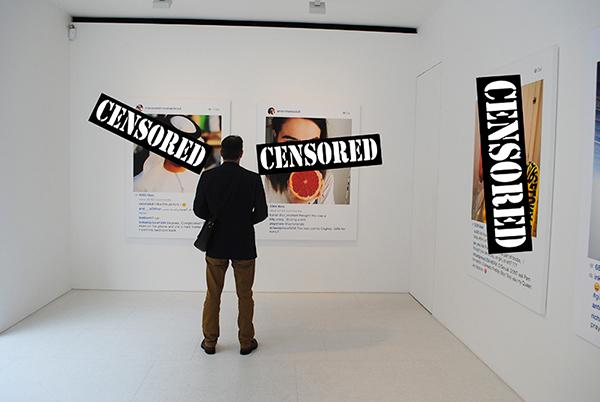The famed American artist Richard Prince is in the news again for his particular practice of appropriation, and as usual questions of copyright infringement have dominated the dialogue surrounding the works on sites such as Business Insider. Prince pulls the photographs from the Instagram pages of his subjects, which is in fact the digital version of his long-standing invention of ‘Re-photography.’
The model and cosmetics entrepreneur Doe Deere wrote on Instagram recently after a portrait of her was presented at Frieze New York. “Yes, my portrait is currently displayed at the Frieze Gallery in NYC, Yes, it’s just a screenshot (not a painting). No, I did not give my permission and yes, the controversial artist Richard Prince put it up anyway. It’s already sold ($90,000 I’ve been told) during the VIP preview. No, I’m not gonna go after him. And nope, I have no idea who ended up with it!”
But Prince is no stranger to those individuals who do go after him: in 2013, the artist won a lawsuit in the United States Court of Appeals against photographer Patrick Cariou over his “Canal Zone” series, in which Prince modified in various ways several of Cariou’s Panamanian landscape photographs and portraits of Rastafarians. Subsequently it was ruled that all but five of the works altered the original content enough that they were “transformative” and therefore did not constitute infringement.
This activity has been the mainstay of the artist’s practice for many decades. Prince invented his own conceptual process as the inventor of ‘Re- photography’; the artist would appropriate existing images – often sourced from advertising as with his famous Marlborough works – and would re-contextualise them by Re-photographing the initial image – a photo of a photo – then subtly re-cropping the image: a practice that would shift the perspective of not only the viewer, but also it would seem, the courts.
Business Insider has recently stated that it believes that unless Prince is taken to court, there is no way of knowing whether or not he is guilty of copyright infringement, despite the fact that the artist has not received permission to use most of the photographs. But the simple fact that he’s altered the images might help the work meet the requirements of fair use, which is a suitable defence against the charge of copyright infringement.
It is true that Richard Prince has built a controversial career from the appropriation of the image, due to appearing to present the works largely unchanged from the original primary source. But that in fact this is the entire point of the artist’s socio-cultural statement.
Prince’s latest practice of sourcing works from Instagram without permission and selling with images for $100,000 a piece, is currently upsetting a number of individuals; but with the appropriation of these Instagram images Prince adds his own fictional social media comments below each one. The ‘Re-photography’ hits the digital age, as the artist copies the original and does his re-crop – not only to keep the courts happy – but to re-contextualise the image.
The artist has been described throughout his career as a con man, a creative hustler. These opinions of Prince have often been insinuated; but this is an impossibility, as it would be a “position.” Many have misinterpreted ambiguity for dishonesty, but for the work to be disingenuous it would require a singular viewpoint: the artist has always held the Duchampian standpoint of a ‘non-authorial’ position. Prince’s ego is not present in the creation of the work.
The artist’s Instagram copy is in fact simulacrum as the initial Instagramer’s identity is masked through Prince’s re-contextualisation of the image – the work is a signifier of our current cultural predicament: the image becomes a reflection of itself, our identity is lost. Baudrillard was right about mass media substituting itself for reality, and Prince proves it via the cyclical emptiness of a social media reflection. There is a long-standing tradition of appropriation in art, after all, where would current cultural understanding – and the image in art be – without the appropriations of Andy Warhol? Is appropriation art appropriate? – Absolutely.
Words: Paul Black © Artlyst 2015
Lead image: Appropriated and censored by Paul Black © 2015

